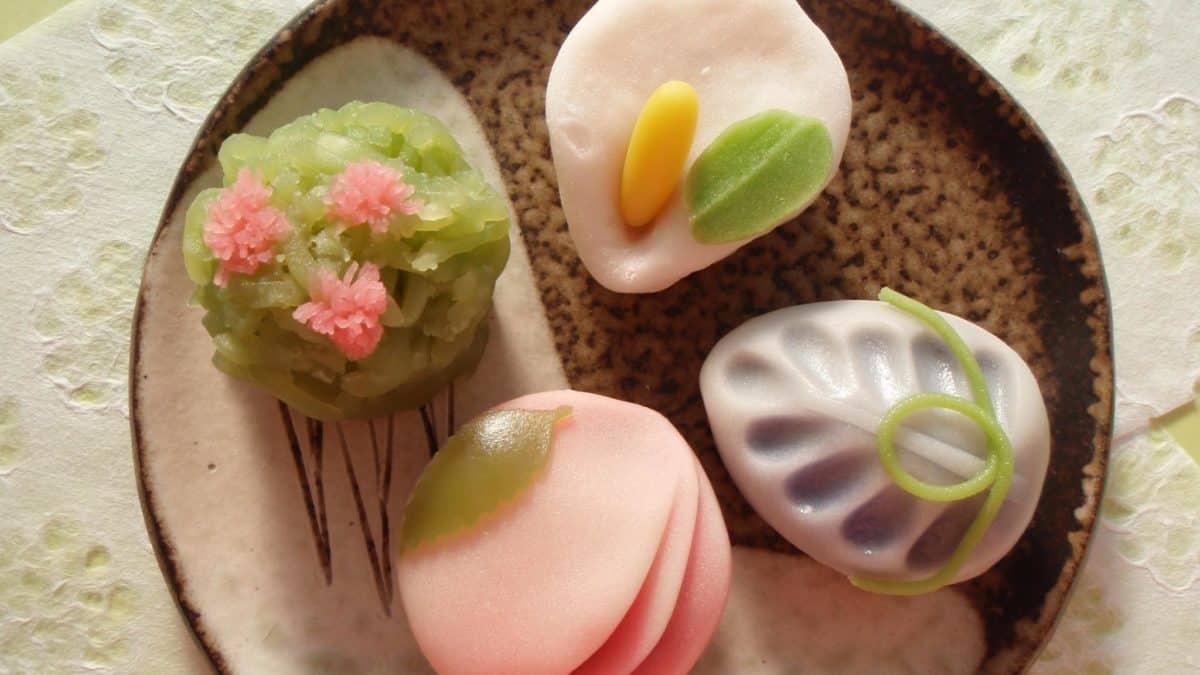Okashi: The “Gashi” in Wagashi And Other Sweets
Gashi often literally translates to greetings, and that’s probably why gashi is used to describe sweets in Japan as well. It’s meant to make people feel welcome in your home and an important part of the tea ceremony.
Okashi is the term used for all types of sweets, from traditional handmade wagashi to the snacks you find in stores like kit kats and other modern inventions called “dagashi.”
There are many different types of gashi or okashi. There’s the difference between yogashi and wagashi for example, used to differentiate between Western (“yo”) and traditional Japanese delicacies (“wa”).
Then there’s subcategories of gashi like mochigashi, several types of wagashi made from mochigome rice.

The original word for sweets is kashi (菓子) and it used to refer to fruits and nuts because that was the closest to sweets anything came before heavy processing.
But, at the end of the Muromachi period, sugar became a staple pantry ingredient because of the increasing trade between Japan and China.
This also introduced tea and dim sum during the Edo period, and so wagashi was born as a little dumpling to be eaten at teatime.
Check out our new cookbook
Bitemybun's family recipes with complete meal planner and recipe guide.
Try it out for free with Kindle Unlimited:
Read for freeJoost Nusselder, the founder of Bite My Bun is a content marketer, dad and loves trying out new food with Japanese food at the heart of his passion, and together with his team he's been creating in-depth blog articles since 2016 to help loyal readers with recipes and cooking tips.

